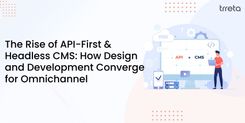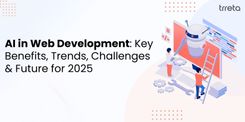Artificial Intelligence isn’t just an add-on anymore. It’s becoming the core of how software gets built, tested, and deployed. Generative AI — the technology behind models that can code, design, or even architect systems — is reshaping every layer of software development.
What this really means is that development teams are no longer just writing logic for machines; they’re collaborating with machines to build smarter, faster, and more adaptive systems. Let’s break this down.
1. From Traditional Design to AI-Augmented Architecture
Until recently, software architecture was largely manual — built around human intuition, best practices, and static frameworks. But generative AI is changing that foundation.
Architects can now feed system requirements, business goals, and existing infrastructure data into AI tools that propose optimized architectures. These models can predict performance bottlenecks, suggest microservice decompositions, and even generate design diagrams dynamically.
Instead of starting from a blank whiteboard, architects begin from AI-generated blueprints and iterate. This approach doesn’t just save time; it reduces design errors that typically surface later in development.
Example:
AI-driven tools like ChatGPT, GitHub Copilot, and emerging system design assistants can now simulate traffic patterns and suggest load balancing strategies before any code is deployed. It’s like having a co-architect who can see every dependency instantly.
2. Smarter Code Creation and Review
Generative AI in coding isn’t new, but its precision has improved dramatically. Developers no longer rely on snippets or auto-complete. They’re using AI to draft entire modules, refactor legacy systems, and auto-generate test cases.
Here’s the thing — this doesn’t mean the developer’s role is reduced. It’s elevated.
AI handles repetitive syntax, boilerplate code, and routine debugging, while developers focus on higher-order logic, security, and integration design.
The workflow now looks like this:
Idea → AI Draft → Developer Refinement → AI Testing → Developer Validation.
The result? Rapid prototyping and fewer bugs slipping into production.
3. Architecture Becomes Adaptive and Data-Driven
Traditional architectures are static; once deployed, changes are slow and risky. AI brings adaptability.
Through predictive analytics and real-time monitoring, generative systems can recommend architectural changes — scaling up microservices, shifting workloads, or optimizing database queries — all before human teams even notice the issue.
This continuous optimization loop turns architecture into a living, learning organism.
For example:
An AI system can analyze API usage patterns and suggest splitting one service into three microservices for better scalability. In cloud environments, it can predict resource overuse and auto-adjust deployment configurations — no manual monitoring required.
4. The New Developer Workflow: Co-Creation Over Construction
Developers used to build code. Now they curate it.
With generative AI embedded in IDEs, design tools, and CI/CD pipelines, the workflow has become about collaboration. Developers prompt, guide, and verify AI outputs instead of manually constructing every line.
This shift brings a new kind of craftsmanship — where creativity, system thinking, and AI literacy matter more than rote syntax.
Modern workflow mindset:
- Developers guide intent, not code every detail.
- QA focuses on validating AI logic instead of catching typos.
- Architects manage system behavior, not infrastructure overhead.
The developer’s toolkit now includes prompting, validation, and continuous learning alongside traditional coding.
5. DevOps Evolves into DevAIps
DevOps was about automation; DevAIps is about intelligence.
Generative AI not only automate deployment — it predicts, recommends, and adapts. From writing YAML configurations to forecasting failures in CI/CD pipelines, AI helps maintain flow without human bottlenecks.
Teams can now implement predictive testing (AI simulating edge cases), self-healing pipelines (AI resolving broken dependencies), and code-to-deployment reasoning (AI aligning commits with business logic).
It’s no longer about “moving faster.” It’s about “moving smarter.”
6. The Human Element: Upskilling and Role Evolution
As currently AI is taking over mechanical tasks, developers and architects need a deeper grasp of abstraction, ethics, and data.
The skill set for the next generation of developers will include:
- AI interaction design: Writing better prompts and interpreting AI outputs.
- System thinking: Understanding how AI-generated modules fit into larger architectures.
- Data fluency: Knowing how AI models use, learn from, and potentially bias data.
- Security awareness: Ensuring AI-generated code doesn’t introduce vulnerabilities.
The future developer isn’t just a coder — they’re a curator of intelligence.
7. Challenges Ahead: Trust, Transparency, and Quality
Generative AI isn’t perfect. It can hallucinate, misinterpret logic, or produce code that looks right but fails under pressure.
Organizations must create governance around AI usage:
- AI outputs should be peer-reviewed like human code.
- Data sources need to be auditable.
- Teams must maintain explainability for every AI-driven decision.
In short, while AI accelerates delivery, trust still relies on human oversight.
8. The Future of AI-Driven Development
Generative AI will soon integrate deeper into architecture decision-making — building entire frameworks, suggesting database schemas, and writing deployment policies automatically.
Imagine a future sprint where AI handles 70% of coding while human developers lead innovation, architecture validation, and ethical reasoning.
For IT companies, this is a defining moment. Those who adapt early — upskilling teams, integrating AI into workflows, and positioning their services around AI-augmented efficiency — will lead the next wave of digital transformation.
Final Thought
Generative AI isn’t replacing developers; it’s reshaping what it means to be one.
It’s turning architecture into an intelligent ecosystem and developers into strategic collaborators.
The companies that understand this shift and act on it will not only build faster software but also create smarter anc evolving systems that learn and scale with time.
The real question isn’t how fast you code anymore. The question is - how intelligently you evolve.




